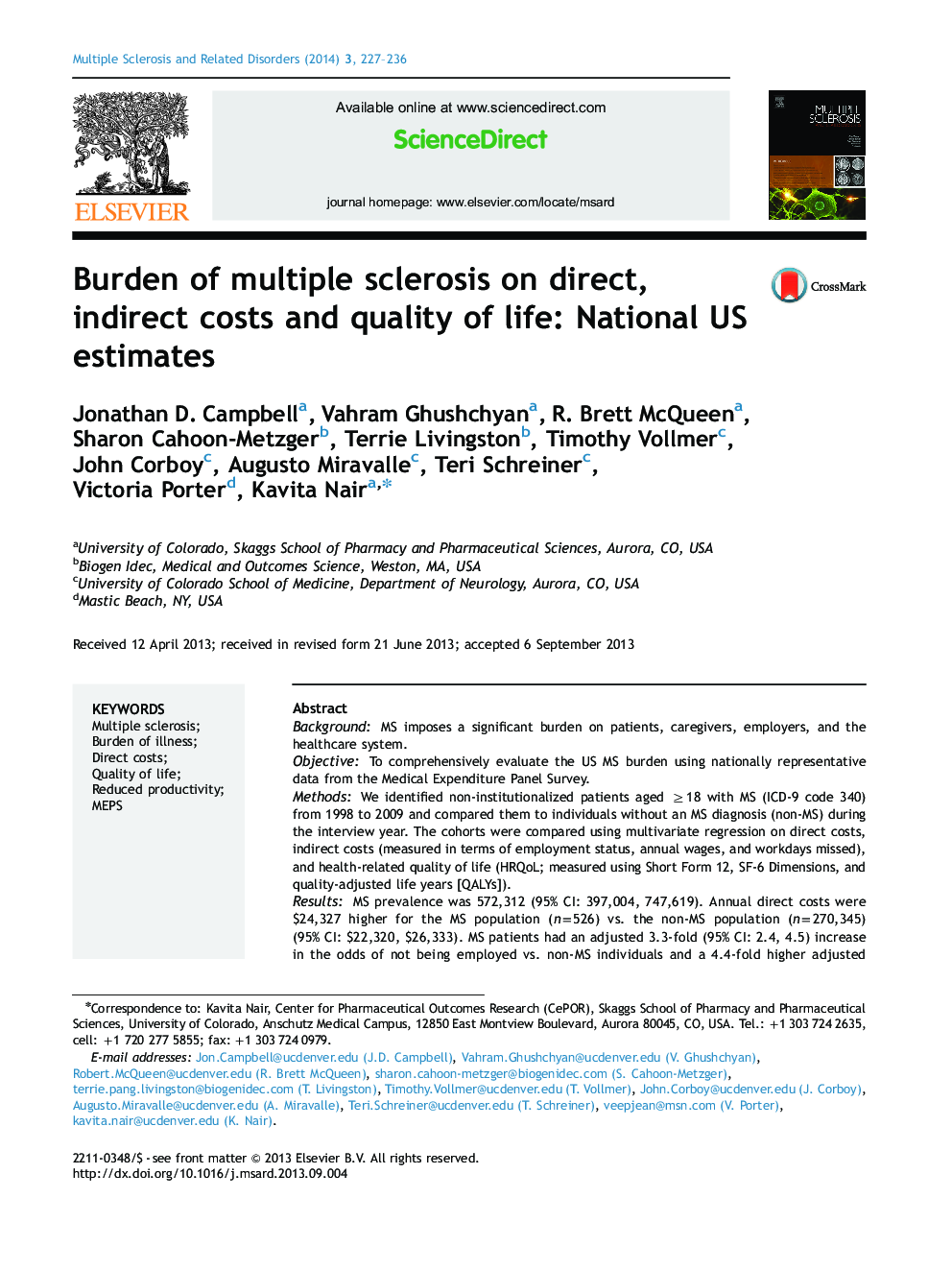| Article ID | Journal | Published Year | Pages | File Type |
|---|---|---|---|---|
| 5912677 | Multiple Sclerosis and Related Disorders | 2014 | 10 Pages |
â¢US multiple sclerosis (MS) prevalence was 572,312 (95% CI: 397,004, 747,619).â¢Annual direct costs were $24,327 higher for the MS population (n=526).â¢MS patients lost on average 10.04 quality-adjusted life years vs. non-MS cohort.â¢MS was associated with higher direct and indirect costs and lower HRQoL.
BackgroundMS imposes a significant burden on patients, caregivers, employers, and the healthcare system.ObjectiveTo comprehensively evaluate the US MS burden using nationally representative data from the Medical Expenditure Panel Survey.MethodsWe identified non-institutionalized patients aged â¥18 with MS (ICD-9 code 340) from 1998 to 2009 and compared them to individuals without an MS diagnosis (non-MS) during the interview year. The cohorts were compared using multivariate regression on direct costs, indirect costs (measured in terms of employment status, annual wages, and workdays missed), and health-related quality of life (HRQoL; measured using Short Form 12, SF-6 Dimensions, and quality-adjusted life years [QALYs]).ResultsMS prevalence was 572,312 (95% CI: 397,004, 747,619). Annual direct costs were $24,327 higher for the MS population (n=526) vs. the non-MS population (n=270,345) (95% CI: $22,320, $26,333). MS patients had an adjusted 3.3-fold (95% CI: 2.4, 4.5) increase in the odds of not being employed vs. non-MS individuals and a 4.4-fold higher adjusted number of days in bed (95% CI 2.97, 6.45). On average, MS patients lost 10.04 QALYs vs. non-MS cohort.ConclusionsMS was associated with higher healthcare costs across all components, reduced productivity due to unemployment and days spent in bed, and lower HRQoL.
